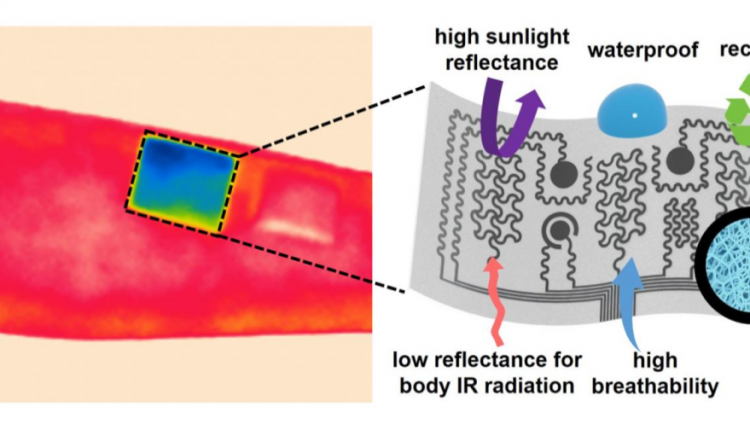
Personal Air Conditioning Device Uses Passive Cooling
Heatstroke starts to occur in humans when their body temperature reaches 104°F or higher and emergency treatment is required to avoid brain, heart, kidney, and muscle damage. Without treatment, there can be serious complications or death.
That’s particularly critical on the military battlefield, where soldiers need to wear protective clothing and carry equipment. Recently, engineers at the University of Missouri have developed an on-skin device that acts as “wearable air conditioning” that should help prevent heat stroke or exhaustion.
The device includes numerous human health care applications such as the ability to monitor blood pressure, electrical activity of the heart, and the level of skin hydration.
Unlike similar products in use today or other related concepts, this breathable and waterproof device can deliver personal air conditioning to a human body through a process called passive cooling. Passive cooling does not utilize electricity, such as a fan or pump, which researchers believe allows for minimal discomfort to the user.
“Our device can reflect sunlight away from the human body to minimize heat absorption, while simultaneously allowing the body to dissipate body heat, thereby allowing us to achieve around 11°F of cooling to the human body during the daytime hours,” said corresponding author Zheng Yan, an assistant professor in the College of Engineering. “We believe this is one of the first demonstrations of this capability in the emerging field of on-skin electronics.”
Currently, the device is a small wired patch, and researchers say it will take one to two years to design a wireless version. They also hope to one day take their technology and apply it to “smart” clothing.
“Eventually, we would like to take this technology and apply it to the development of smart textiles,” Yan said. “That would allow for the device’s cooling capabilities to be delivered across the whole body. Right now, the cooling is only concentrated in a specific area where the patch is located. We believe this could potentially help reduce electricity usage and also help with global warming.”
Source: University of Missouri
